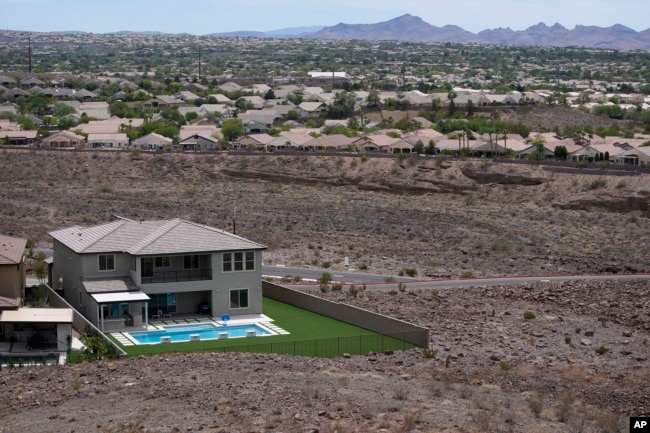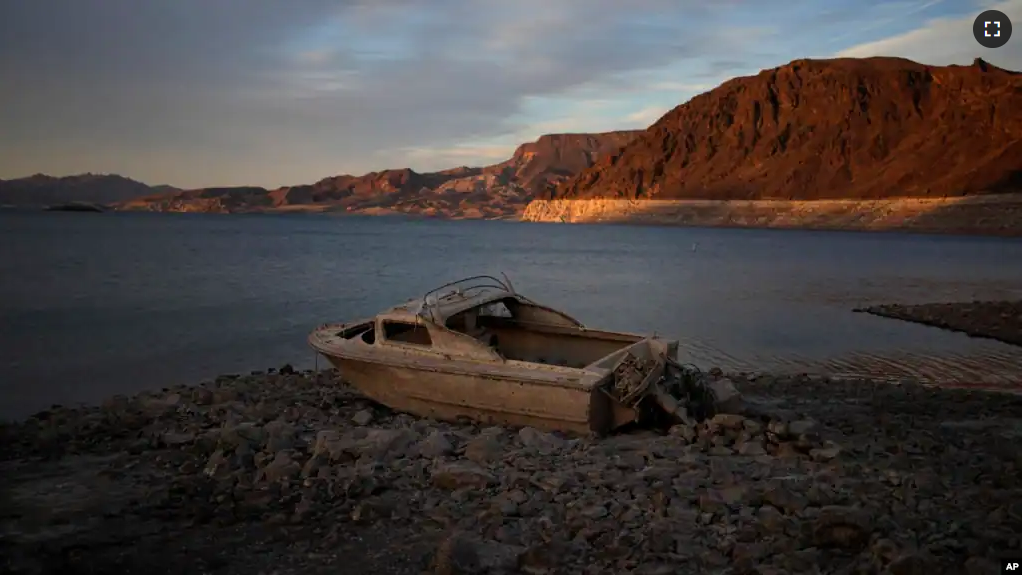The American states of Arizona and Nevada will again face cuts in the amount of water they can draw from the Colorado River. Federal officials announced the cuts this week as the western states are experiencing extremely dry weather conditions.
The cuts planned for next year will force states to decide where and how to reduce water usage. The decision will put more pressure on the states with a growing population in a hotter, drier future.
“We are taking steps to protect the 40 million people who depend on the Colorado River for their lives and livelihoods,” said Camille Touton. She leads the U.S Bureau of Reclamation which oversees water policy for the river.
The Colorado River provides water across seven American states and Mexico. Its water helps support an agricultural industry valued at $15 billion a year. The federal estimates of the water levels will also determine how much states and cities can draw for their water supply.
In addition to those cuts, the Bureau of Reclamation said Tuesday that states had missed a deadline to propose at least 15 percent more cuts needed to keep the water levels at the lakes, or reservoirs, from dropping even more.
For example, officials have predicted that water levels at Lake Mead, the nation’s largest reservoir, will drop severely. The lake is currently less than a quarter full.
“The states collectively have not identified and adopted specific actions of sufficient magnitude that would stabilize the system,” Touton said.
In Arizona, the state placed all its water reduction last year on the agricultural industry. Now, officials will have to decide whether to spread additional pain to growing cities that depend on the river. The cuts are not expected to have a considerable effect on Nevada. It already has one of the strongest water conservation policies in the West.

The cut is planned for next year only. But, University of Oxford researcher Kevin Wheeler said the science shows it will likely remain for much longer.
“It’s pretty clear that these reductions just have to stay in place until the drought has ended or we realize they actually have to get worse and the cuts have to get deeper.”
The cuts are based on a plan the seven states and Mexico signed in 2019 to help maintain reservoir levels. Under that plan, the amount of water set aside for states depends on the water levels at Lake Mead.
Last year, the lake fell low enough for the U.S. government to declare a first-ever water shortage in the area. The declaration forced required cuts for Arizona and Nevada as well as Mexico in 2022.
Officials expect the falling lake levels to bring additional cuts to Nevada, Arizona, and Mexico next year. Other states with higher claims to water rights are not expected to see cuts.
Reservoir levels have been falling for years — and faster than experts predicted — after 22 years of dry weather. Climate change and overuse of the river have worsened the situation.
Hot temperatures and less snow have reduced the amount of water flowing from the Rocky Mountains, where the river starts to wind its way 2,334 kilometers into the Gulf of Mexico.
Already, officials have held back millions of cubic meters of water in Lake Powell. It is the other large Colorado River reservoir sitting upstream from Lake Mead along the Arizona-Utah border. Water from the lake runs through Glen Canyon Dam, which produces enough electricity to power between 1 million and 1.5 million homes each year.
As water levels at Lake Powell reached levels low enough to threaten water-based power production, federal officials said they would hold back an additional 592 million cubic meters of water to ensure the dam could still produce energy. That water would normally flow to Lake Mead.
Under the new reductions, Arizona will lose slightly more water than it did this year, when 18 percent of its supply was cut. In 2023, it will lose an additional 3 percent. Nevada will lose about 8 percent of its supply. Last year, Nevada lost 7 percent.
Mexico will lose 7 percent of the amount of water it receives each year from the river. Last year, it lost about 5 percent. The water is a lifeline for northern desert cities including Tijuana and a large farm industry in the Mexicali Valley, just south of the border from California’s Imperial Valley.
I’m Caty Weaver.
The Associated Press reported this story. Hai Do adapted the story for Learning English.
___________________________________________________________________
Words in This Story
determine – v. to officially decide something because of evidence or facts
adopt – v. to formally accept or approve something
sufficient – adj. having as much as needed
magnitude – n. the size, importance, or extent of something
stabilize – v. to make something steady
maintain – v. to continue without changing
